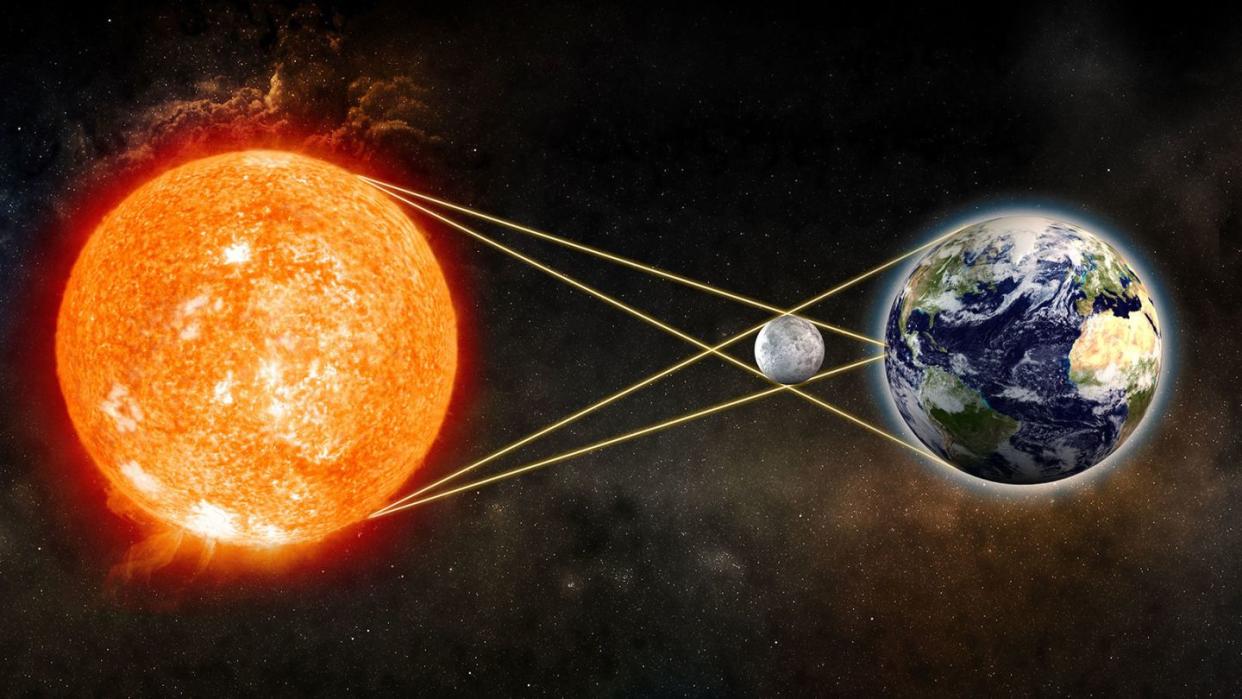One Day, Many Years From Now, Total Solar Eclipses Will No Longer Be Possible

On Monday, the direct shadow of the moon will cut a 70-mile-wide band—the path of totality—across the United States during the Great American Eclipse. It's going to be a mind-blowing event, and it'll be another seven years before the next total solar eclipse crosses American soil.
And someday, there will be a last eclipse.
A total solar eclipse is possible because the apparent diameter of the moon in the sky, given the right conditions, is larger than the apparent diameter of the sun, and all direct sunlight is blocked at certain points on the globe. Eventually, though—long after you and I have departed—the moon will no longer be large enough in the sky to block the light of the sun entirely.
Every year, the moon moves about 3.8 centimeters (1.5 inches) farther away from Earth. In addition, the sun is slowly growing larger as it fuses hydrogen into helium and consumes its nuclear fuel. The moon has been slowly slipping away from Earth ever since it formed billions of years ago, a time when the moon was closer and larger in the sky. Because it is getting farther away and smaller as viewed by us on Earth, and the sun is getting larger, there is an inevitable day when the moon will become too small in the sky to block the whole sun.
That day is about 600 million years in the future. A paper published by NASA predicts total solar eclipses will end in about 563 million years. However, Belgian astronomer Jean Meeus suggests in his book, More Mathematical Astronomy Morsels, that perturbations in the orbits of the moon and the Earth will result in periods of on-and-off total solar eclipses starting in 620 million years, and the very last one won't happen until 1.2 billion years from now.

The last one, whenever it is, will be incredibly brief, only seconds or less. As the moon moves away from the planet, it blocks the light of the sun less frequently and for a shorter period of time.
The orbits of the Earth, moon, and sun are elliptical, so at times these bodies are closer and farther away from each other. Each year, during wintertime in the northern hemisphere, the Earth reaches its closest point to the sun, or perihelion, and during the northern hemisphere summer the Earth hits the farthest point from the sun, or aphelion. The same thing happens to the moon every month or so, so the distances to the moon and sun, and their apparent sizes in the sky, are always changing—in addition to the moon's constant movement away from the Earth.
When the moon moves directly in front of the sun, but it's not quite big enough in the sky to block all the light, you get an annular solar eclipse, when the sunlight burns as a ring surrounding the circumference of the moon. These eclipses will become more common as time goes by, and total solar eclipses will become less common until they finally end in hundreds of millions of years.
But do not fret, friends. After Monday's Great American Eclipse, another one will cross much of the continental United States in 2024. And for the rest of our lives, and the lives of many generations after us, there will be a total solar eclipse somewhere on the planet about every year or two. We are truly lucky to live in a time when the heavenly bodies line up just right to produce total solar eclipses. If humanity survives to see the last total solar eclipse, it would be an astounding testament to the capabilities of the species.
But for now, enjoy the total solar eclipse on Monday, and if you can't make it to the path of totality, start thinking about when and where you are going to see this greatest of natural phenomena.
[Related: Everything To Know About the January 2019 Lunar Eclipse]
You Might Also Like

